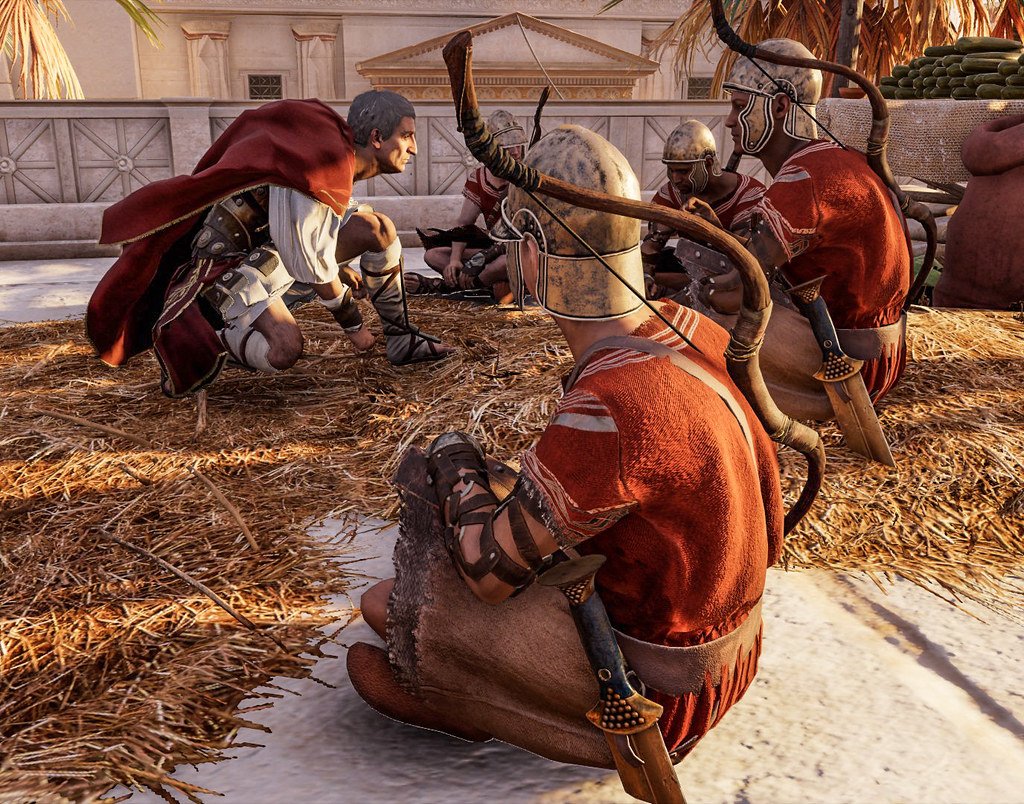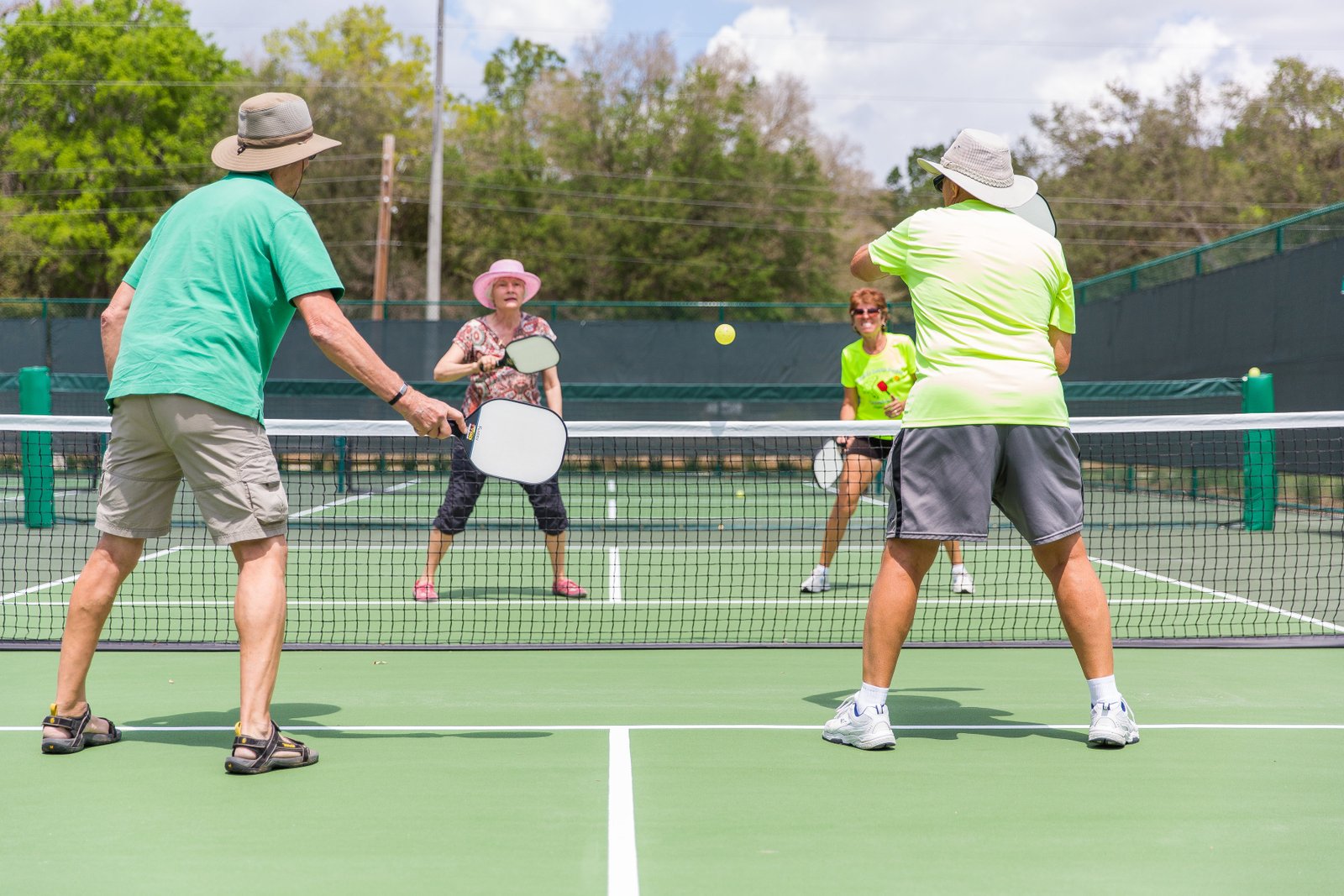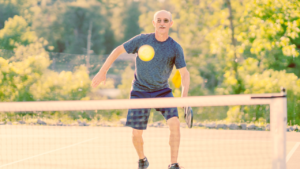Pickleball, the whimsically named hybrid sport that marries elements of tennis, badminton, and table tennis, has become a sensation in recent years, attracting players of all ages and skill levels. With its distinctive paddle and wiffle ball, this addictive game has taken over parks, community centers, and retirement communities, captivating enthusiasts who engage in rapid-paced exchanges with a fervor akin to Wimbledon. While the allure of pickleball is undeniable, what does science have to say about this quirky phenomenon?-Delving beneath the surface, this article explores the science behind pickleball, unearthing fascinating research findings that shed light on the physics, physiology, and psychology of this uniquely entertaining sport. Whether you’re a seasoned pickleball pro or a curious newbie, prepare to have your mind boggled and your love for the game reignited as we plunge into the intriguing universe of the science of pickleball.
Table of Contents
- The Origins and Evolution of Pickleball
- The Health Benefits of Playing Pickleball
- Harnessing the Power of Technology in Pickleball Research
- Tips for Improving Pickleball Technique and Strategy
- Exploring the Mental and Psychological Effects of Pickleball
- Q&A
- Final Thoughts

The Origins and Evolution of Pickleball
Pickleball is a captivating sport that combines elements of badminton, tennis, and table tennis, resulting in a unique and exhilarating experience. Although it gained popularity in recent years, its origins can be traced back to the summer of 1965 on Bainbridge Island, Washington.
A charismatic trio – Joel Pritchard, Bill Bell, and Barney McCallum – invented the game as a way to keep their children entertained during the summer break. They utilized some improvised equipment, including ping pong paddles and a perforated plastic ball. The objective was simple: to hit the ball over the badminton net without letting it touch the ground.
As the game gained traction within the community, the trio began to fine-tune the rules and equipment. The plastic ball was replaced with a larger wiffle ball, which provided better stability and control. The court dimensions were adjusted to 20 by 44 feet, resembling a small size tennis court with a modified net height.
Pickleball’s evolution continued as more and more enthusiasts embraced the sport. In the 1970s, it spread to neighboring states, sparking interest across the United States. Organizations were formed, official rulebooks were created, and dedicated pickleball courts emerged across the nation. Now, pickleball has grown into a global phenomenon, attracting players of all ages and skill levels.

The Health Benefits of Playing Pickleball
Engaging in physical activities is crucial for maintaining a healthy lifestyle, and pickleball offers a fun and exciting way to achieve this. Besides being quite enjoyable, playing pickleball also provides numerous health benefits that can improve both your physical and mental well-being.
1. Cardiovascular Endurance:
Playing pickleball requires constant movement, which helps increase your heart rate and improve cardiovascular endurance. The combination of aerobic and anaerobic movements involved in this sport gets your blood pumping, increasing oxygen intake, and improving the efficiency of your heart and lungs.
2. Increased Flexibility:
Pickleball involves various rapid movements and quick changes in direction, leading to improved flexibility. Stretching and reaching for shots help to enhance joint mobility and muscle flexibility, reducing the risk of injuries and increasing overall agility.
3. Enhanced Balance and Coordination:
As you strive to hit the ball with precision, pickleball improves your balance and hand-eye coordination. The sport’s repetitive movements also promote better motor skills and reaction time, helping to prevent falls and assisting in day-to-day activities that require coordination.
4. Stress Relief:
Playing pickleball is an excellent way to relieve stress and boost your mood. Physical exercise stimulates the release of endorphins, known as “feel-good” hormones, which can uplift your spirits and reduce anxiety and depression.

Harnessing the Power of Technology in Pickleball Research
Pickleball, a fast-growing sport that combines elements of tennis, ping pong, and badminton, has captured the hearts of players around the world. As the popularity of this game continues to soar, so too does the need for innovative research and development in order to enhance the understanding and performance of players. Thankfully, in today’s digital age, we have the opportunity to harness the power of technology to propel pickleball research to new heights.
The use of high-speed cameras has become an invaluable tool for analyzing pickleball matches. With the ability to capture movements at a staggering 240 frames per second, researchers can closely examine player techniques, footwork, and shot selection. This technology allows for in-depth biomechanical analyses, enabling researchers to identify areas for improvement and devise strategies to optimize performance.
Furthermore, the advent of virtual reality (VR) has opened up a whole new world of possibilities for pickleball research. By immersing players in simulated environments, researchers can study reactions, decision-making abilities, and overall game sense in a controlled setting. VR also offers the potential for targeted training programs, allowing players to practice specific shots and scenarios with unprecedented realism and precision.
In addition to these advancements, technology has also revolutionized data collection and analysis in pickleball research. Through the use of wearable sensors and smart racquets, players’ movements, swing speed, and ball impact can be measured, giving researchers a wealth of quantitative data to analyze. This detailed information allows for the identification of patterns, trends, and correlations that were previously inaccessible, enabling researchers to develop evidence-based strategies to improve performance.
is an exciting prospect. As we embrace these digital innovations, we are not only pushing the boundaries of what is possible in the sport, but also fueling a deeper understanding of the game. With each technological breakthrough, we inch closer to unlocking new strategies, optimizing player performance, and elevating pickleball to new heights.
Tips for Improving Pickleball Technique and Strategy
Are you looking to enhance your pickleball game and dominate the court? Look no further! Here are some valuable tips that will take your pickleball technique and strategy to the next level.
1. Master Your Serve:
-
Serving is crucial in pickleball, so spend time practicing different serves to keep your opponents guessing. Experiment with speed, spin, and placement to keep them on their toes.
-
Try using the “Third Shot Drop” technique. This involves hitting a high and loopy shot deep into your opponent’s kitchen, forcing them to hit the ball up and providing you with an opportunity to take control of the net.
2. Work on Your Footwork:
-
Footwork is key in pickleball as it allows you to quickly react to shots and position yourself optimally on the court. Practice your quick lateral movements and pivots to anticipate your opponent’s shots.
-
Stay light on your feet and maintain a balanced stance, enabling you to swiftly transition from defense to offense and cover the entire court efficiently.
3. Develop Strategic Shot Placement:
-
Instead of solely focusing on powerful shots, learn to strategically place the ball. Aim for your opponent’s weaker side or exploit gaps in their positioning to keep them off balance.
-
Use dink shots to disrupt your opponent’s rhythm. These soft, short shots force them to move forward and backward, making it harder for them to set up powerful returns.
By implementing these tips into your pickleball game, you’ll notice a significant improvement in your technique and strategy. Remember, practice makes perfect, so hit the court, have fun, and watch your pickleball skills soar!
Exploring the Mental and Psychological Effects of Pickleball
Pickleball, the vibrant and fast-paced sport that has captured the hearts of many, offers more than just physical benefits. Beyond the mesmerizing rallies and exhilarating matches lies a realm of mental and psychological effects that have remained uncharted, until now. Let’s delve into the profound impacts this sport has on the mind and spirit.
Mental Agility: Playing pickleball demands sharp focus and quick decision-making. Amidst the swift exchanges of volleys, players sharpen their mental agility, enhancing cognitive skills like problem-solving, strategic thinking, and attentiveness. The constant engagement required to maneuver around the court fosters mental acuity, leaving players feeling mentally stimulated long after the game ends.
Stress Relief: The captivating nature of pickleball serves as an ideal stress-relief outlet. The combination of physical activity, camaraderie, and the sheer joy of the game provide a welcome distraction from life’s pressures. When the ball bounces off the paddle, worries and anxieties dissipate, replaced by the euphoric rush of adrenaline. The game acts as a release valve, enabling players to unwind, leaving them feeling recharged and revitalized.
Emotional Well-being: Pickleball goes beyond mere physical exercise – it fosters emotional well-being. The sense of camaraderie and community that pervades the sport creates a supportive and inclusive environment. The bonds forged on the court contribute to improved self-esteem, decreased feelings of isolation, and an overall boost in emotional well-being. The elation and satisfaction derived from playing pickleball fuel a greater sense of happiness and fulfillment, enhancing the psychological state of players both on and off the court.
Q&A
Q: What is pickleball?
Pickleball is a paddle sport that combines elements of tennis, badminton, and table tennis. It is played on a smaller court with a solid paddle and a polymer ball with holes.
Q: How did pickleball originate?
Pickleball was created in 1965 by three friends – Joel Pritchard, Bill Bell, and Barney McCallum – on Bainbridge Island, Washington. It started as a backyard game for their families and quickly gained popularity.
Q: What does research tell us about the health benefits of pickleball?
Research suggests that pickleball can provide numerous health benefits, such as improving cardiovascular fitness, enhancing balance and agility, promoting joint flexibility, and increasing mental sharpness.
Q: Is pickleball suitable for all age groups?
Yes, pickleball is a versatile sport suitable for all age groups. Its smaller court size and slower ball speed make it accessible for older adults, while its fast-paced nature and strategy attract younger players too.
Q: Can pickleball help with weight loss?
Engaging in any physical activity, including pickleball, can contribute to weight loss by burning calories. However, maintaining a balanced and healthy diet is equally important for effective weight management.
Q: How does pickleball compare to other recreational sports?
Compared to other recreational sports, pickleball offers a lower impact on joints due to its smaller court size and slower ball speed. Additionally, it provides a social and fun environment that encourages player interaction and camaraderie.
Q: Does pickleball have any psychological benefits?
Yes, pickleball has psychological benefits. Participating in this sport can reduce stress levels, improve mood, boost self-confidence, and provide a sense of accomplishment, making it beneficial for mental well-being.
Q: Are there any risks or precautions associated with playing pickleball?
While pickleball is generally a safe sport, players should be cautious of potential injuries, such as strains, sprains, and overheating. Warming up, using proper equipment, and practicing good technique can help minimize these risks.
Q: Is pickleball a sustainable sport?
Pickleball is considered a sustainable sport as it requires minimal equipment, has a smaller court size, and often uses recycled or renewable materials in its production. This eco-friendly aspect adds to its appeal for players concerned about environmental impact.
Q: What does the future hold for pickleball research?
The future of pickleball research looks promising. As the sport continues to grow in popularity, more studies are likely to examine its physiological, psychological, and sociological aspects, providing further insights into its benefits and potential applications.
Final Thoughts
In the realm of precision, power, and finesse, pickleball has emerged as a captivating sport that tantalizes players of all ages and skill levels. Thousands of paddles magnetically connect with neon-yellow balls, producing a cacophony of rhythmic slaps, echoing through the courts. It is within this dynamic arena that science, in all its fervor, has embarked on unraveling the secrets of pickleball.
Through meticulous research and fascinating experiments, we have delved deep into the core mechanics of this deceptively simple yet unbelievably addictive sport. Our understanding of the physics behind the paddle’s sweet spot, the sweet spot itself, has expanded, prompting players to reevaluate their strategies and push the boundaries of possibility.
The interplay between power and precision, agility and strategy, has enchanted scholars who tirelessly examine the mechanisms that lie at the heart of pickleball. From exploring the effects of varying ball velocities on paddle angles to scrutinizing the importance of court positioning, research has illuminated the subtleties that separate a good shot from a game-changing one.
Scientists have also delved into the physiological realm, seeking to understand the profound impact pickleball has on the human body. Hours of mind-bending rallies, sharp pivots, and lightning-fast reactions necessitate an intricate dance between mental acuity and physical fitness. With each deep dive into the world of exertion and endurance, we gain valuable insights into the adaptations our bodies undergo to meet the sport’s rigorous demands.
However, it is not only technique and athleticism that science seeks to decipher; it is also the magic that binds players together, forging unbreakable bonds amidst the flurry of the courts. The intricate social dynamics, the camaraderie that blooms on the sidelines, and the delightful banter echoing across the nets all inspire investigations into the undeniable human connection fostered by pickleball.
As the final whistle blows, and players embark on a graceful exit, scientific inquiry continues to drive the evolution of this addictive pursuit. What today seems extraordinary may soon become the norm as the ceaseless pursuit of knowledge unravels the secrets that lie within the courts of pickleball.
So, fellow enthusiasts, let us continue our quest for discovery hand in hand with science, as we celebrate the unity of artistry, athleticism, and the boundless possibilities that pickleball offers. Together, we will savor the thrill, uncover the infinite depths of this ever-evolving sport, and redefine what it means to pursue excellence on the courts.
As an affiliate, my content may feature links to products I personally use and recommend. By taking action, like subscribing or making a purchase, you’ll be supporting my work and fueling my taco cravings at the same time. Win-win, right?
Want to read more? Check out our Affiliate Disclosure page.




